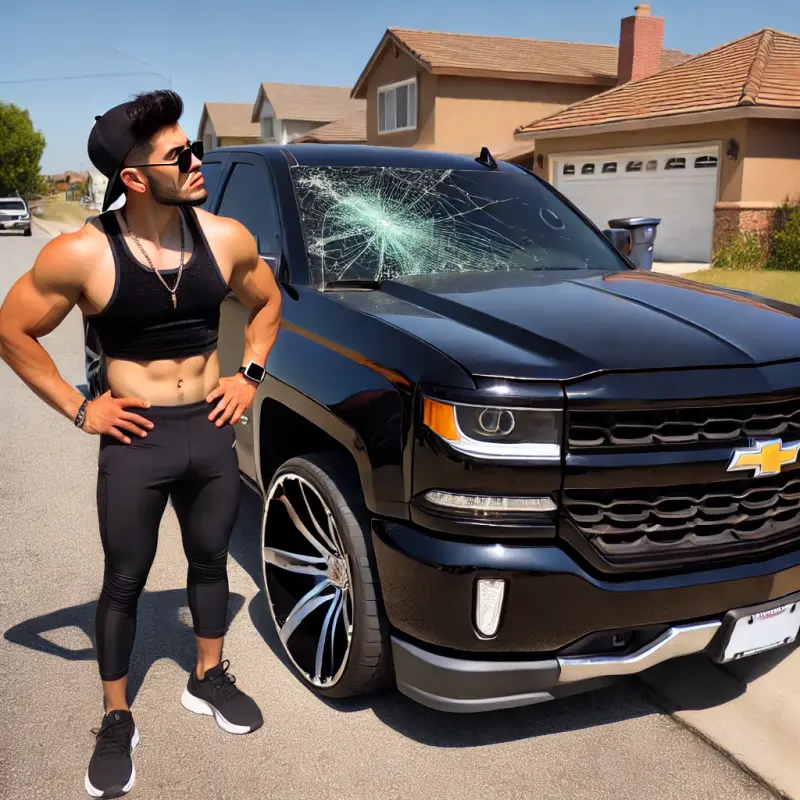Introduction
So, you've found yourself in a bit of a pickle—maybe a rogue pebble decided to make your windshield its new playground, or perhaps an unfortunate encounter with some flying debris left your rear window looking like Swiss cheese. Whatever the case may be, auto glass replacement is on your mind, and you’re probably wondering what options are available. Fear not! This article is your go-to guide for everything you need to know about the different types of auto glass available for replacement. We'll cover everything from the basics to the intricacies of auto glass types, ensuring you’re well-equipped to make an informed decision when it comes time to replace that shattered pane.
What is Auto Glass Replacement?
Auto glass replacement refers to the process of removing damaged or broken glass from a vehicle and installing new glass in its place. This could involve windshields, side windows, or rear windows, all of which serve essential functions in vehicle safety and comfort.
Why is Auto Glass Important?
Auto glass isn’t just there for show; it plays a vital role in:
- Structural Integrity: A properly installed windshield contributes significantly to a car's structural strength. Safety Features: Many modern vehicles have advanced safety features that rely on proper auto glass installation, such as sensors and cameras. Visibility: Clear visibility is essential for safe driving; cracks or chips can obstruct your view.
Common Types of Auto Glass
When it comes to auto glass replacement, you’ve got several options. Let’s dive into the different types available.
1. Laminated Glass: The Safety Champion
Laminated glass consists of two layers of tempered glass with a layer of polyvinyl butyral (PVB) sandwiched between them.
Benefits of Laminated Glass
- Safety: In case of breakage, the PVB layer holds shards together, reducing injury risk. Noise Reduction: It offers better acoustic insulation compared to other types.
When Should You Choose Laminated Glass?
If safety’s your number one concern (and rightly so!), laminated glass should be at the top of your list for windshields.
2. Tempered Glass: Strength Meets Style
Tempered glass is manufactured through a process that heats it up and then cools it rapidly, making it much stronger than standard glass.
Advantages of Tempered Glass
- Shatter Resistance: If broken, it crumbles into small pieces instead of sharp shards. Temperature Tolerance: It can handle significant temperature fluctuations without cracking.
Ideal Uses for Tempered Glass
Perfect for side windows and rear windows where shattering poses a lower risk than with windshields.
3. Float Glass: The Classic Choice
Float glass is made by floating molten glass on top of molten tin during manufacturing.
Pros and Cons of Float Glass
Pros:
- Inexpensive Easy to fabricate
Cons:
- Vulnerable to shattering Lack of insulation properties
Best Applications
Generally used in older models or as secondary options in non-essential areas like side mirrors.
4. Polycarbonate Glass: The Lightweight Wonder
Polycarbonate is an incredibly durable plastic that’s becoming increasingly popular due to its lightweight nature and exceptional impact resistance.
Features That Make Polycarbonate Stand Out
- Very lightweight High impact resistance UV resistant
When Is Polycarbonate Ideal?
Great for off-road vehicles or situations where weight savings are crucial, such as racing cars.
5. Acoustic Laminate: Silence Is Golden
Acoustic laminate has similar construction to laminated glass but includes specialized sound-dampening materials within the layers.
Why Go Acoustic?
If you're tired of road noise interrupting your playlist or podcast binges while driving, this type might be right up your alley!
Conclusion
There you have it—your comprehensive guide to exploring different types of auto glass available for replacement! Whether you lean towards laminated safety features or find yourself enamored by acoustic options that mute road noise like magic, knowing what’s out there will empower you when it's time for that dreaded repair shop visit. Remember, choosing the right type isn't just about aesthetics; it's also about safety and functionality. So gear up with this knowledge and tackle that windshield replacement with confidence!
FAQs About Auto Glass Replacement
Q1: How long does auto glass replacement take?
A1: Typically, auto glass replacement takes between 30 minutes to two hours depending on the type and location of the repair needed.
Q2: Can I drive my car immediately after replacing auto glass?
A2: While some repairs allow immediate driving, it's advisable to wait at least an hour before hitting the road again after installation—especially if adhesives were used.
Q3: Will insurance cover my auto glass replacement costs?
A3: Many insurance policies do cover windshield replacements; however, always check with your provider regarding specific coverage details.

Q4: How do I know if I need an entire window replaced rather than just repaired?
A4: If there charlotte auto glass replacement are multiple cracks or damage spans across more than 6 inches in length, it's usually time for a full replacement rather than just a patch job!
Q5: What should I look for in an auto glass repair shop?
A5: Look for certifications (like NGA), positive reviews online, warranty offerings, and experience level in handling the specific type of vehicle you're driving.
Q6: Are there any DIY methods I can try at home before calling professionals?
A6: While some minor chips can be filled using repair kits from stores, it’s best left to professionals especially when dealing with safety-critical components like windshields!
With this extensive breakdown under our belt—and knowing exactly what kinds are available—you'll never feel lost again when faced with the task of replacing your vehicle's precious panes!